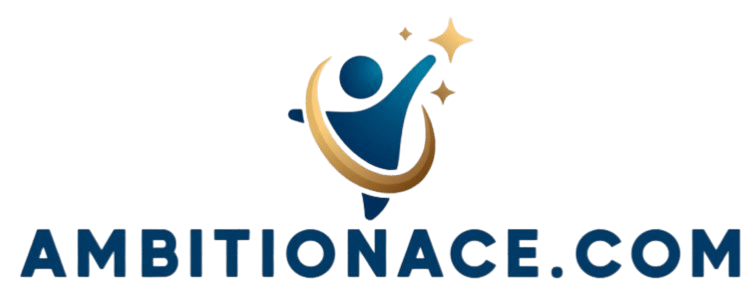10 Exercises to Improve Focus and Reduce Procrastination
In today s fast-paced world, maintaining focus and overcoming procrastination can indeed seem like an uphill battle. Whether you re navigating work projects or personal tasks, explore these ten dynamic exercises that sharpen your focus right now!
This article presents ten practical exercises aimed at enhancing your concentration. Jump in and discover insights that can transform your workflow and help you reclaim your valuable time!
Contents
- Key Takeaways:
- 1. Mindful Breathing
- 2. Pomodoro Technique
- 3. Visualization
- 4. Body Scanning
- 5. Time Blocking
- 6. Exercise Breaks
- 7. Decluttering Your Workspace
- 8. Setting Specific Goals
- 9. Eliminating Distractions
- 10. Using a Planner or Schedule
- Boost Your Focus and Beat Procrastination with These Exercises!
- Discover the Benefits of Mindful Breathing!
- Master Your Focus with the Pomodoro Technique!
- Unlock Focus with Visualization!
- How Does Body Scanning Help with Reducing Procrastination?
- What Is Time Blocking and How Can It Improve Focus?
- What Are the Benefits of Taking Exercise Breaks for Focus?
- How Can Decluttering Your Workspace Improve Focus?
- Why Is Setting Specific Goals Important for Reducing Procrastination?
- What Are Some Common Distractions and How Can They Be Eliminated?
- How Can Using a Planner or Schedule Improve Focus and Reduce Procrastination?
- Frequently Asked Questions
- 1. What are some effective exercises to improve focus and reduce procrastination?
- 2. How does mindfulness meditation help improve focus and reduce procrastination?
- 3. Can physical exercises also help with improving focus and reducing procrastination?
- 4. How can visualization techniques be used to improve focus and reduce procrastination?
- 5. Is it helpful to set specific goals to improve focus and reduce procrastination?
- 6. Can technology help improve focus and reduce procrastination?
Key Takeaways:

- Practicing mindful breathing can help improve focus and reduce procrastination by increasing awareness and reducing stress and distractions.
- The Pomodoro technique is an effective time management tool that can improve focus and productivity by breaking tasks into manageable chunks with short breaks in between.
- Visualization techniques can help improve focus by creating a clear mental picture of goals and motivating the mind to work towards achieving them.
1. Mindful Breathing
Mindful breathing is an exceptionally powerful and accessible practice that elevates your mental clarity and emotional well-being. It fosters a direct connection between your mind and body, enabling you to manage stress responses more effectively.
Among these methods, Nadi Shodhana, or alternate nostril breathing, truly shines as a remarkably effective technique for promoting balance and calming your nervous system. This practice not only encourages relaxation but is also linked to improved emotional regulation, allowing you to face stressors with greater composure.
Research shows that breathing techniques can greatly benefit your mental health. Engaging in mindful breathing exercises can lead to measurable improvements in mental health metrics, such as reduced anxiety levels and heightened self-efficacy. Regular practice shows a positive correlation with changes in the brain that help you respond better to stress over time, giving you the power to cultivate healthier responses to stress.
2. Pomodoro Technique
The Pomodoro Technique is your go-to time management method for enhancing productivity and focus. By breaking your work into intervals of 25 minutes, followed by short breaks, you’ll effectively combat procrastination and improve task initiation especially beneficial if you’re navigating ADHD.
This structured approach also helps you concentrate while minimizing the natural tendency to avoid tasks, allowing you to tackle your work in manageable chunks. During those short breaks, consider incorporating productivity exercises like stretching, deep breathing, or a quick walk; these can rejuvenate both your mind and body. You might also explore 7 daily practices to reduce procrastination for additional strategies.
Reinforcing positive self-talk during these intervals think affirmations or reflections on your accomplishments can significantly boost your morale and maintain clarity. For example, after completing a session, take a moment to recognize your efforts. This simple act can cultivate a more motivated and resilient mindset, making your productivity journey all the more rewarding.
3. Visualization
Visualization is a powerful mental technique. It encourages you to create vivid mental images of your success.
This practice can significantly elevate your self-confidence and motivation. It sharpens your focus and minimizes procrastination, especially when you apply techniques for staying focused across various tasks.
By tapping into the power of your imagination, you can effectively rehearse your goals, transforming abstract concepts into real experiences. This mental rehearsal not only equips you for real-life challenges but also cultivates a sense of self-efficacy your belief in your ability to succeed reinforcing your aspirations.
In academic settings, for instance, you might visualize delivering a successful presentation or achieving stellar exam results. Similarly, professionals can picture themselves acing a job interview or leading a successful project with flair.
Start visualizing your goals today! Find a quiet space where you can close your eyes and vividly imagine the steps you ll take toward your goals. Incorporate sensory details to make the experience more immersive and real.
This engaging process not only builds resilience and optimism, but also contributes significantly to your overall emotional well-being.
4. Body Scanning
Body scanning is a mindfulness practice that invites you to direct your attention to different parts of your body. This practice promotes emotional regulation and stress management.
It also enhances overall mental clarity by addressing discomfort often tied to stress and anxiety. By cultivating a deeper awareness of your physical sensations, you can better recognize and address the emotional states that may lead to procrastination.
This newfound awareness gives you the power to improve your self-regulation, as you become more attuned to the signs of tension or unease that frequently trigger avoidance behaviors.
To practice body scanning, find a comfortable and quiet position whether sitting or lying down. Start by taking a few deep breaths to center your mind.
Gradually shift your focus to each body part, beginning from your toes and moving up to the crown of your head. Observe any sensations, tightness, or emotions that arise, holding each section in your attention for a few moments before moving on.
This process helps you become more aware of yourself and lays a solid foundation for managing impulses, reducing anxiety, and ultimately enhancing your emotional resilience.
5. Time Blocking
Time blocking is an exceptional time management technique that allows you to allocate specific blocks of time for various activities. This strategy enhances your productivity and minimizes task avoidance.
By dedicating time slots for each task, you can visualize your daily commitments. This helps reduce the mental clutter that often leads to procrastination.
To create a time-blocking schedule, start by listing all your tasks and prioritizing them based on deadlines or importance. Then, divide your day into manageable segments, allowing for focused work periods interspersed with brief breaks.
This method leverages the psychological principle of habit formation where consistent repetition reinforces behaviors and gradually builds a routine. As you adhere to your schedule, you’ll cultivate a greater sense of discipline, significantly aiding in achieving your long-term goals.
6. Exercise Breaks
Incorporating exercise breaks into your work routine can greatly enhance both your physical wellness and mental resilience. This approach leads to reduced anxiety and improved focus, which is particularly beneficial if you’re navigating ADHD or high stress levels.
These brief, invigorating sessions can manifest in various forms think stretching, brisk walking, or even more structured activities like yoga or light strength training.
Research shows that even short bursts of physical activity can boost blood flow to your brain, leading to heightened concentration and a more positive outlook.
For example, studies have revealed that a mere 10-minute walk can elevate your mood and significantly increase productivity. This allows you to return to your tasks with renewed creativity and sharper focus.
These exercises during breaks not only refresh your mind but also cultivate resilience, making them an invaluable addition to your daily routine.
7. Decluttering Your Workspace

Decluttering your workspace is a transformative practice that significantly enhances your productivity and emotional well-being. When you set up a space that helps you focus, you reduce the cognitive overload that often stems from environmental distractions.
In a cluttered space, distractions are everywhere, leading to increased stress and anxiety that make it difficult to concentrate on crucial tasks. When you take the time to organize your personal and professional spaces, you foster clarity, which in turn enhances your decision-making and creativity.
Adopting practical decluttering strategies such as:
- Categorizing items
- Dedicate time for regular clean-ups
- Implementing effective storage solutions
enables you to combat the chaos efficiently. A tidy workspace sharpens your organizational skills. It also helps you resist procrastination, giving you the power to approach tasks with renewed vigor and focus.
8. Setting Specific Goals
Setting specific goals is essential for enhancing your self-efficacy and facilitating meaningful changing your habits, especially when it comes to tackling academic procrastination and boosting your overall motivation to achieve desired outcomes.
When you establish goals that are specific, measurable, attainable, relevant, and time-bound often referred to as the SMART criteria (specific, measurable, attainable, relevant, and time-bound) you create a solid framework that fosters a sense of ownership and accountability. For example, instead of saying you want to “study more,” set a clear goal like “study for two hours every weekday after school.” This makes your objective clearer and more attainable.
With this level of specificity, you can track your progress, which in turn enhances your confidence as you meet these targeted milestones.
Similarly, a measurable goal like “completing one chapter of a textbook every week” provides you with tangible metrics for success. This approach reinforces your motivation with consistent, positive feedback, encouraging you to put forth further effort and commitment.
9. Eliminating Distractions
Eliminating distractions is crucial for you to maintain concentration and productivity. By creating a focused environment that minimizes interruptions, you significantly enhance your task performance, making effective time management a top priority.
Addressing common distractions like noise and mobile devices can greatly improve your ability to focus. Implement strategies such as setting designated work hours, silencing notifications, and organizing your workspace to foster a more conducive atmosphere. It’s important to understand why you create this space. It helps you focus on your tasks.
A distraction-free workspace doesn t just elevate your overall productivity; it also cultivates a sense of accomplishment and satisfaction as you meet your goals with greater efficiency.
10. Using a Planner or Schedule
Using a planner can be a game-changer. You’ll love how it boosts your productivity! Utilizing a planner or schedule is a powerful strategy for enhancing your organizational skills and improving your time management. It allows you to see what you need to do, track habits, and engage in self-reflection, ultimately leading to a noticeable boost in productivity.
With a variety of planners available daily, weekly, and monthly you can choose the format that best suits your preferences and lifestyle demands. Daily planners are perfect if you thrive on detailed schedules, while weekly planners give you a broad overview of your tasks, offering better foresight. On the other hand, monthly planners provide a comprehensive look at your long-term goals and commitments.
By incorporating these tools into your daily routine, you can significantly reduce procrastination and hold yourself accountable for how you spend your time. Habit tracking within your planner enables you to identify patterns in your behavior, making it easier to set achievable goals. Integrating self-reflection into this process further enhances your personal growth, as taking the time to reflect on your accomplishments and challenges fosters greater self-awareness and motivation.
Boost Your Focus and Beat Procrastination with These Exercises!
The exercises you explore, including mindful breathing, the Pomodoro Technique, and time blocking, can elevate your focus and reduce procrastination. For additional strategies, consider these mindfulness exercises to combat procrastination. They help you manage emotions, encourage positive behavior, and enhance self-awareness.
Incorporating these practices into your daily routine can significantly boost your productivity. Mindful breathing calms you, allowing better focus on tasks.
The Pomodoro Technique involves structured work sessions that engage your mind while preventing burnout. Time blocking helps clarify goals and prioritize tasks effectively.
Transform your work habits! These exercises work together to create a powerful synergy.
Discover the Benefits of Mindful Breathing!
Mindful breathing offers a wealth of benefits, including effective stress management and enhanced emotional well-being. It s a vital tool for elevating your mental clarity and focus through simple yet powerful breathing techniques.
Engaging in this practice creates a profound sense of calm, allowing you to center your thoughts and emotions even in the most challenging situations. As you immerse yourself in mindful breathing, you ll likely notice a significant reduction in anxiety, as it draws your attention away from racing thoughts and fosters a state of present-focused mindfulness.
Enhanced concentration is another compelling advantage. The rhythm of conscious breath helps clear the mental clutter, enabling you to engage more fully with your tasks. To practice effectively, find a quiet space, sit comfortably, and take a moment to observe your natural breath.
- Gradually inhale deeply through your nose while counting to four.
- Hold for a count of four.
- Exhale slowly through your mouth for a count of six.
By repeating this cycle for several minutes, you allow your mind to settle, paving the way for a clearer, more focused mindset.
Master Your Focus with the Pomodoro Technique!
The Pomodoro Technique is designed to elevate your focus and productivity by segmenting tasks into manageable intervals. Work for 25 minutes, then take a 5-minute break. After four sessions, enjoy a longer break of 15 to 30 minutes. Using a timer to track your work intervals and breaks sharpens your concentration and helps fend off distractions.
Tasks like studying, writing, or even tackling household chores are perfect fits for this approach, enabling you to sustain your energy and motivation throughout the day.
Unlock Focus with Visualization!

Visualization stands as a potent cognitive strategy that can elevate your focus, enabling you to mentally rehearse your goals and successes. This practice enhances self-confidence and brings clarity to your tasks.
Your brain can t always tell the difference between real and imagined experiences. By picturing yourself successfully completing tasks be it an athlete envisioning a flawless sprint or a public speaker imagining their impactful presentation you can effectively reduce anxiety and amplify your performance.
Techniques like guided imagery and progressive relaxation serve as valuable tools in crafting these intricate mental scenarios. Research indicates that professionals across various domains, from surgeons mentally rehearsing critical operations to musicians visualizing a perfect performance, experience significant improvements in focus and overall effectiveness through these mental rehearsals.
How Does Body Scanning Help with Reducing Procrastination?
Body scanning is an effective mindfulness practice that can significantly reduce procrastination by enhancing your emotional regulation and fostering deeper self-awareness. This method gives you the power to recognize and confront the discomfort that often accompanies avoidance, along with techniques to help you stop procrastinating.
This practice encourages you to tune into various parts of your body, observing sensations without judgment. As you do this, you might discover important insights about your anxieties or resistance that typically lead to procrastination. By cultivating this awareness, embrace discomfort to move forward.
To embark on your body scanning journey, find a quiet space where you can settle in. Close your eyes and take slow breaths. Gradually shift your attention from your toes to the crown of your head, noticing any tension, relaxation, or emotional responses that arise along the way.
The benefits of this practice can be profound expect reduced anxiety, improved focus on tasks, and a heightened sense of presence. This newfound clarity will empower you to take actionable steps toward your goals with confidence and intention.
What Is Time Blocking and How Can It Improve Focus?
Time blocking is a strategic method that can transform how you organize your day, significantly enhancing your focus and productivity. By allocating specific times for tasks, you cultivate better organizational skills.
When you break your day into dedicated blocks, you can concentrate on one activity at a time, minimizing the temptation to multitask. This approach not only improves your time management but also establishes clear boundaries, making it easier for you to prioritize essential responsibilities.
For example, you might designate the first two hours of your day for focused, uninterrupted work time, followed by a block for meetings and emails. Crafting a straightforward weekly template, with each task carefully slotted into a specific timeframe, enables a seamless transition between activities. This way, you can maximize your efficiency and relish a rewarding sense of accomplishment.
What Are the Benefits of Taking Exercise Breaks for Focus?
Taking exercise breaks can significantly enhance your focus by promoting physical wellness and alleviating anxiety, providing a refreshing reset that revitalizes your mental energy and productivity.
Incorporating movement into your daily routine is simple, but the benefits are transformative. Engaging in even brief exercise sessions whether it s a quick walk, some stretches, or desk exercises can help clear the mental fog and elevate your overall morale.
By prioritizing these breaks, you not only improve your physical health but also establish a rhythm that nurtures creativity and sharpens concentration. Integrating a variety of activities, such as exercises that strengthen muscles, yoga, or even a fun game, can make these moments both enjoyable and effective.
Ultimately, this fosters a more invigorated work ethic and reduces the risk of burnout.
How Can Decluttering Your Workspace Improve Focus?
Decluttering your workspace can profoundly enhance your focus by minimizing distractions and elevating your emotional well-being, all while creating an atmosphere ripe for productivity and creativity.
When your environment is streamlined, you often experience a heightened sense of control, which can lead to decreased stress levels and clearer, more focused thinking. This transformation in mindset may not occur overnight, but with dedication and consistent effort, you’ll notice a significant shift in how you tackle tasks.
To declutter effectively, begin by categorizing your items distinguish between essentials and non-essentials. You might also want to adopt the one in, one out rule to maintain that delicate balance. Regularly revisiting your organizational methods will keep your workspace fresh and functional.
The long-term advantages of maintaining a tidy workspace include increased motivation, an improved mood, and enhanced efficiency. This leads to a more enjoyable and productive work experience.
Why Is Setting Specific Goals Important for Reducing Procrastination?
Setting specific goals is essential for combating procrastination. It gives you clear direction and boosts your motivation. Ultimately, this enhances your self-efficacy and makes tasks feel more achievable.
When you define tasks and break them down into manageable steps, you’ll find yourself more engaged and focused. This leads to a greater sense of progress.
For instance, instead of saying you want to “get fit,” specifying a goal like “exercise for 30 minutes, five times a week” provides you with a tangible endpoint to strive for. This clarity not only helps you fight procrastination but also instills a sense of accountability.
Utilizing techniques like SMART goals (Specific, Measurable, Achievable, Relevant, Time-bound) allows you to transform aspirations into actionable plans, ensuring that your inspiration effectively translates into real progress.
What Are Some Common Distractions and How Can They Be Eliminated?
Common distractions include:
- Mobile notifications
- Social media
- Environmental noise
These distractions can seriously derail your focus and productivity. You can supercharge your focus by adopting techniques to reduce procrastination and eliminate these interruptions.
By acknowledging these distractions, you can take proactive measures to minimize their impact. For example, silencing your mobile devices or using apps that block distracting websites during work hours can create a more conducive environment for concentration.
Establishing a designated workspace can further enhance your ability to focus. To cultivate a distraction-free atmosphere, consider playing soft background music or using noise-canceling headphones to block out disruptive sounds.
Ultimately, developing a routine that prioritizes focused work periods can dramatically boost your overall efficiency.
How Can Using a Planner or Schedule Improve Focus and Reduce Procrastination?

Utilizing a planner or schedule can significantly enhance your focus and curb procrastination. It provides a structured framework for managing your time, making it easier to track tasks and engage in meaningful self-reflection. For further assistance, consider exploring tools to help you stay focused.
With effective planning, you can break large projects into manageable parts, transforming daunting tasks into achievable steps. You ll find a variety of planners available daily, weekly, and monthly formats each designed to meet your unique organizational needs.
Some individuals may gravitate toward digital planners or apps that send reminders, while others may prefer the tactile satisfaction of traditional paper planners. Techniques like time blocking and the Pomodoro Technique can further elevate your productivity. These methods encourage you to engage in focused work sessions followed by short breaks, which help maintain your motivation and clarity throughout the day.
Frequently Asked Questions
1. What are some effective exercises to improve focus and reduce procrastination?
Some effective exercises to improve focus and reduce procrastination include mindfulness meditation, deep breathing, visualization techniques, and goal-setting exercises.
2. How does mindfulness meditation help improve focus and reduce procrastination?
Mindfulness meditation can be a game-changer! It trains your mind to stay present and focused, keeping distractions at bay.
3. Can physical exercises also help with improving focus and reducing procrastination?
Yes, physical exercises such as yoga, tai chi, and aerobic exercises can help improve focus and reduce procrastination. In addition to these activities, exploring techniques for building focus can enhance overall brain function, increase energy levels, and reduce stress and anxiety.
4. How can visualization techniques be used to improve focus and reduce procrastination?
Visualization techniques involve picturing yourself successfully completing a task or achieving a goal. This can help increase motivation and reduce feelings of procrastination, making it easier to focus on the task at hand.
Ready to conquer procrastination? Start setting your goals today!
5. Is it helpful to set specific goals to improve focus and reduce procrastination?
Yes, setting clear goals can enhance focus and cut down procrastination. With a defined target, you can stay motivated and complete tasks more effectively.
6. Can technology help improve focus and reduce procrastination?
Absolutely! Many apps can supercharge your focus. Try time-management apps, distraction-blocking tools, and Pomodoro timers to maximize your productivity.






